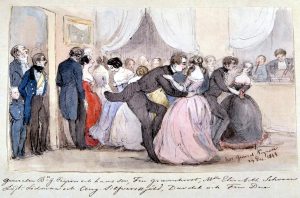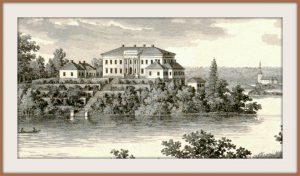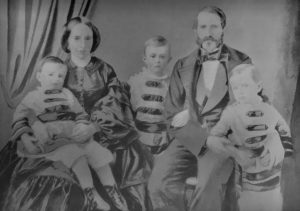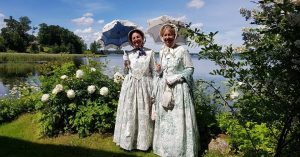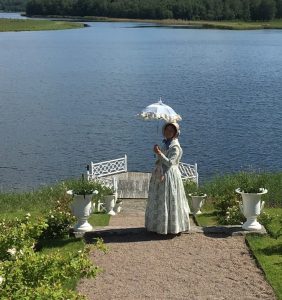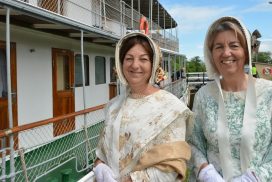5. Elisabeth Schwan – The Belle of the Balls
At 7:30 in the evening, I set off in a carriage pulled by 2 white horses through illuminated streets and cheering crowds to the Bourgeoisie’s Ball on the occasion of the King’s anniversary. The ballroom was unbelievably beautiful and the whole party was, according to unanimous testimony, successful on all accounts. It was probably the most beautiful [ball] in the 25-years [of the King’s reign]. I danced with Miss Gurli [Kantzow], Miss Mathilda [Horn], and Mamsell Elisabeth Schwan, each the beauty of the ball in her own genre. (Erik af Edholm’s diary, 6 Feb 1843)
Elisabeth Schwan was the belle of the balls. Erik af Edholm, who was the son of the King’s personal doctor, chronicled the social life in Stockholm in the 1840s. And he liked Elisabeth Schwan.
The weather this morning was wonderful, warm and sunny as at the end of April, and The Square* was full of people strolling around. The water trickled around the paving stones on the slightly dirty streets and in higher places, sun-dried paving stones provided a nice playground for children and pets.
In The Square, Elisabeth Schwan sashayed her young pleasures in a pink silk hat and a small, school coat. I confess that I abandoned my companions, the Poppiuses, and went straight to wish her a happy new year because I had not seen her since before Christmas, and then I accompanied her, her mother, and the Munthes for several turns around The Square. Being too elated, I even accompanied Mrs. Munthe all the way to her door at 69 Regeringsgatan. (Erik af Edholm’s diary, 29 Jan 1843).
*The Square (Swedish: Torget) was the nickname for Carl XIII’s Square, which is a part of the large central park, Kungsträdgården, in Stockholm.
Fritz von Dardel also liked Elisabeth, at least he liked to include her in his drawings of the social life in Stockholm.
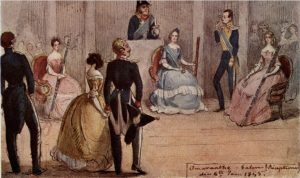
The Amaranth Ball, 6 January 1845. Painting by Fritz von Dardel. Elisabeth is the girl in the yellow dress. Yes, our Augusta was there too!
Who was Elisabeth Schwan?
Elisabeth Mathilda Schwan was born on February 2, 1828. Her father, Johan Gustaf Schwan (b. 1802), was a wealthy merchant who had married his cousin, Augusta Eleonora Schön. She was the daughter of another important merchant in Stockholm – Johan Schön (b. 1781).
I was already familiar with the wealthy family Schön. The mother of one of Augusta’s friends, Adèlaide (Adèle) Peijron, was born Schön. And it turned out that the mothers of Elisabeth Schwan and Adèle Peijron were sisters. So Elisabeth and Adèle were cousins.
Elisabeth married Knut Cassel who had studied law and worked at the Department of Finance in Stockholm. In 1860, the family purchased Stjernsund Castle from the royal family. There they raised 5 sons.
A Visit to Stjernsund Castle in 2019
Using the language of Augusta’s time, Stjernsund is handsomely situated on a promontory above the still, blue waters of Lake Alsen. It is now a museum.
On a beautiful day in the summer of 2019, Kerstin and I visited Stjernsund Castle dressed in our finest summer dresses. We took a guided tour of the castle and saw a few things that had belonged to Elisabeth. It is well worth a visit!
Sources and links:
af Edholm, Erik. Svunna Dagar. P. A. Norstedt & Söner, Stockholm 1944.
